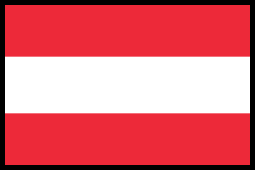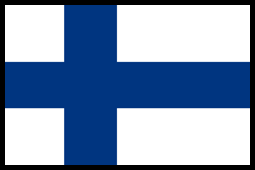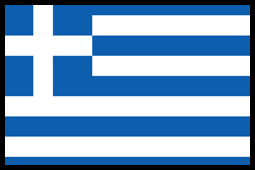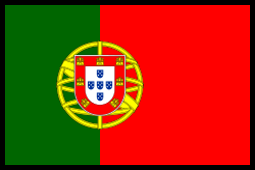Send Gifts In Europe / Croatia / Gift Baskets to Zadar
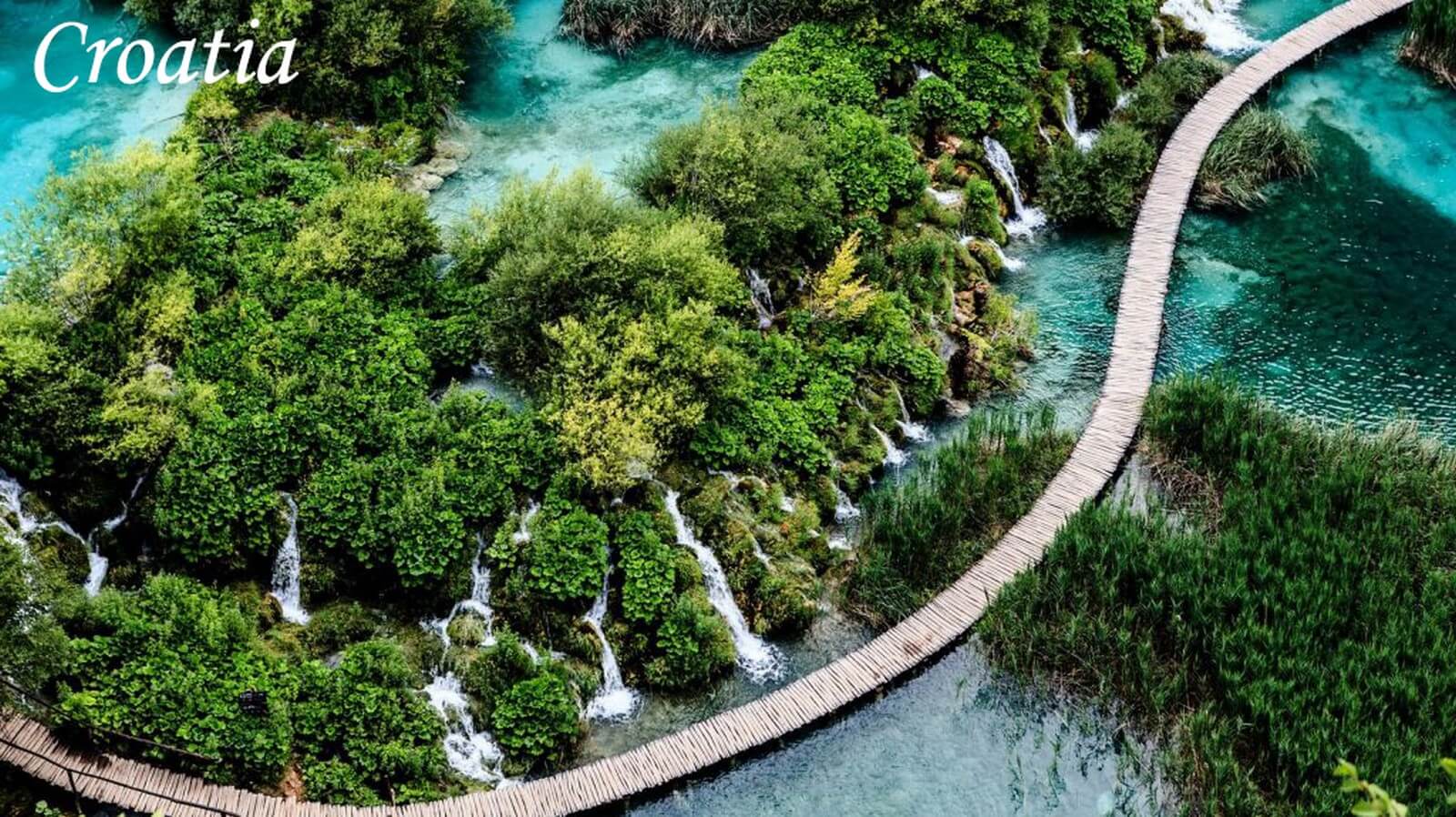
Send Gift Baskets to Zadar, Croatia
Are you looking for the best and perfect gift baskets to Zadar, Croatia for your loved one? If yes, you reached the right place.
Zadar, a city on Croatia’s Dalmatian coast
Population of Zadar: 75,346
The standard delivery method to Zadar: 2 – 3 working days*
The express delivery method to Zadar: 1 – 2 working days*
*Saturday and Sunday are not included as working days
Use Our Advice
We are here always at your service.
No Minimum Order
Each customer is important to us.
Shipping Information
We deliver all over Europe.
Discover Our Gift Baskets For Every Occasion
Holiday Gifts
Zadar Overview
Zadar, a city on Croatia’s Dalmatian coast, is known for its Roman and Venetian ruins. There are several Venetian gates on the city walls. Surrounding the Roman-era Forum is 11th-century St. Mary’s Convent, with religious sculptures and stunning mosaics encased around it for protection. While most people know about the 12th-century St. Anastasia’s Cathedral, there are also plenty of other great churches to see in this beautiful city. One is the round, 9th-century pre-Romanesque Church of St. Donatus which will make you wonder how anyone could build a building so largely without modern technology.
Etymology and historical names
The name of the city of Zadar has been in use for a long time. It first emerged as Iadera and Iader in ancient times. There are many different theories about how it ended up being called Zadar: One theory is that it was named after the ancient school of thought dealing with angles and levels of SIGHT. Most likely, this is related to a hydrographical term that was invented by ancient Mediterranean people and their Pre-Indo-European language. It was later transmitted to the Liburnians who used it. The name of the Liburnian settlement was first mentioned in a Greek inscription from Pharos (Stari grad) on the island of Hvar in 384 BC. Zadar citizens didn’t appear until later, but the Greek name for their city is also recorded at this time. The city’s name is Idassa and it was likely derived from the original Liburnian expression, I-D-A-S.
In Late Antiquity, the name was mainly found in Latin sources such as Iadères. These names were not just found in people and places but also in a variety of things like poetry, awards, letters, and more. The accent stayed on the first syllable throughout all of the forms. This changed to the long-vowel sound that is common in Dalmatians today.
Geography
Zadar is overshadowed by the Archipelago of Ugljan and Pašman, where it is only separated by a narrow strait. The city used to be shaped like a long triangle with its apex pointing to the sea. But as the population grew, it continued to expand until it almost reached the mainland. A harbor is usually a safe place for boats and nearby people, but it’s still just down the road from bad areas of town that have flooded many times in history.
Climate
Zadar has a borderline humid subtropical (Cfa) and Mediterranean climate (Csa). The city is primarily known for its mild humid subtropical weather which averages 42% of rainfall but one summer month is below 40 millimeters (1.6 in). Zadar, therefore, doesn’t achieve the status of solely humid subtropical or Mediterranean. Well known in Croatia as the freshwater pearl of the Adriatic Sea, Zadar has mild, wet winters and very warm, humid summers. The average annual rainfall is more than 917 mm (36.10 inches) and July and August are by far the hottest months with an average high temperature of around 29–30 °C (84–86 °F). August 5th saw the highest ever temperature in Croatia. The hottest recorded temperature for an entire year was also reached back on this day! The summer months can be consistently warm and humid with temperatures reaching over 30 °C, but spring and autumn may also reach the same temperature. Temperatures below 0°C (32°F) are rare and are not maintained for more than a few days. January is the coldest month, with an average temperature of around 7.7°C (46°F). The lowest temperature ever recorded in Zadar was -12 degrees Celsius on 28th February and it had never reached that low again. In July and September, the temperatures did not get as cold, but they still stayed chilly. Daily rainfall in London is the highest during summertime, with a total of about 114 mm (4.49 in) in October and September respectively. Otherwise, October and November are the wettest months with total precipitation of 119 mm (4.69 inches). The driest month is July, with just 35 mm (1.38 inches) of precipitation on average. In Zadar, there is a higher chance that you’ll experience snow in December and January, but there’s also a chance of this happening in March. On average, you’ll have 1-2 days of snow per year. A significant range in sea temperature is provided during the year with the difference between each month being at least 7 degrees Celsius. The warmest months of May-October are also times when you can swim, though this will depend on weather conditions.
History
Zadar is a city that has been continuously inhabited since prehistoric times. The earliest evidence of human life in Zadar comes from the Late Stone Age, while countless settlements have been dated as early as the Neolithic. The ancient population of Illyria came to be assimilated with the Indo-Europeans who settled their lands about 2000 BC. They became a new cultural unity, by merging with the Liburnia. Zadar is named after Zara which was a Latin name meaning the “joyful one” and the settlement in Croatia was founded in the 9th century BC. It lays along a small piece of land between two rivers on an embankment.
Culture
Zadar developed into a significant artistic center during the Renaissance. It was home to famous architects, sculptors, painters, and other scholars. da Sebenico, Laurana, Ventura, Meldolla, and Fortunio are all artists who have written great works of art.
In Croatia, there is a rich history of medieval Croatian literature and Zadar is one of the cultural centers where it was developed. Split and Dubrovnik are also known for their literary legacy. In the 15th and 16th centuries, Croatians were writing at a rapid pace in their language. In this period, important historical works were created that still exists to this day by Jerolim Vidolić, Petar Zoranić (the first Croatian novel), Brne Karnarutić, Juraj Baraković, and Šime Bud.
City Government
The administrative area of the City of Zadar includes the nearby villages of Babindub, Crno, Kožino, and Petrčane, as well as the islands of Ist, Iž, Molat, and Olib. The total city area covers 194 km2.
Zadar is divided into 21 local districts: Arbanasi, Bili Brig, Bokanjac, Brodarica, Crvene Kuće, Diklo, Dračevac, Jazine I, Jazine II, Maslina and more.
Mayor Dukić of Zadar was elected for a second term. The local council is composed of 27 members.
Population
According to the 2011 census, Zadar is the fifth largest city in Croatia and has a population of 75,082. The 2001 census showed Zadar with a population of 72,718 consisting of 93% Croats.
Economy
Major industries incorporate tourism, traffic and maritime trade, agriculture, fishing, and fish farming activities; metal manufacturing and mechanical engineering industries; chemicals and non-metal industry; while banking is another key contributor.
Transportation
In the 20th century, roads became more important than sea routes, but Zadar was still an important transport hub. The main road along the Adriatic passes through the city. Zagreb-Dubrovnik highway runs in parallel with the Adriatic coast. You can access it by two interchanges: Zadar 1 exit on the northern side and Zadar 2 hub near Zemunik in the south. The southern interchange is connected to the Zadar port of Gaženica next to the D424 expressway.
When it comes to buses, you have a few options for your public transportation needs. In some parts of Europe, however, you can find different types of transport such as trains and taxis. Zadar has a bus station that can provide services for both inter-city and local patronage, which makes it a great location for transit service.
Sports
The basketball, football, and handball clubs are all located in Zadar. Not only that, but Zadar is also home to Croatian handball player Ivan Ninčević and football players.
Other Sports: Badminton: Badminton club Zadar
Is Zadar worth visiting in Croatia?
It may be worth visiting Zadar, which offers some great beaches and islands, but also a lively nightlife with more low-key clubs than bigger cities like Split.
15 Best Things to Do in Zadar (Croatia)
St. Donatus’ Church
This early-Byzantine church was built back in the year 800 and remains in a near-perfect state of preservation. Over time St. Donatus’ tall, rounded outline has become a symbol and a source of pride for Zadar, not just its first building you’ll see once you get into town but also its port city on the Ad. You don’t have to be a professional historian to appreciate the simplicity of this old building. These days, the church is mainly used as a venue for classical music shows, and the beautiful 27-meter-high walls complement the sound perfectly. The church was built on the Roman Forum, which is where you will find information below. It’s good to know that material from this site was used in its construction.
Roman Forum
Zadar is the largest Roman forum east of the Adriatic Sea. The site was discovered in 1930 and according to two inscriptions found there, it was established by Emperor Augustus during the first century. After bombs dropped during WWII, the wreckage was cleared and by the ’60s, people were able to make use of this place once again. The colonnade and pillory building that once stood here is nothing but rubble now, left behind by the destruction of the temple and basilica. You can still see where they would have been because of the raised foundation ground.
City Walls and Gates
Zadar has never fallen to the Ottomans, and this is down to the formidable defense system that was constructed in the 1500s by Venetians. One of the things that take priority for many people when visiting Rome is taking in all the breathtaking views. Most people love to see the old city gates and their historic wall. The common name of one of these gateways is The Land Gate. The walls of this impressive building are made with deep red bricks and vibrant yellow stone. The beautiful building is surrounded by a broad open space, which is capped by a large ornate gilded dome. Well known for its spartan nature and proximity to many local attractions like the seaport, the castle, a beach, and an impressive park.
St. Mary’s Church
On the eastern edge of Zadar, a small town is St. Mary’s Monastery, founded in the 11th century and located in a UNESCO World Heritage site. The building has been restored and now houses one of the most prized exhibits there is – its 17th-century wooden altar. The Permanent Exhibition of Religious Art features an awe-inspiring variety of beautiful religious artifacts like tapestries, manuscripts, reliefs, and embroideries from a thousand years between the 700s and 1700s. This candid exhibition is operated by women in the monastery and has signs in English to help people understand how things were made or why they are important.
Museum of Ancient Glass
Many Roman glass vessels from Croatia can be found at this contemporary museum in the cosmopolitan city of Pula. It was constructed in 1845 and was previously called the Princely Holy Palace. As with beverage selection, there are many options for how to use displays in your business, with many using glass jars and vials. Jars are a practical way to bring everything together and create a perfect display. You can brush up on the history of glassmaking in Croatia and spend the day surrounded by glassblowing demonstrations. You have the opportunity to purchase some items from the gathering after finishing your time at the exhibition.
St. Anastasia’s Cathedral
Zadar’s cathedral was founded in 300 and underwent several renovations throughout the 12th century to form the structure you see today. The beauty of its architecture is worth noting, as it is yet another example of Zadar’s fine collection of medieval buildings. The cathedral was consecrated by Pope Alexander VII in 1177 and had the privilege of having a visit from Pope John Paul II in 2003. You can see an early-Christian mosaic from the original building, which is symbolic that this cathedral was built on Christian principles over 800 years ago. The “beautiful bell tower” is new and went up in the 1850s. The project started much earlier but got delayed over time.
National Museum
This is a museum that gives you a deeper look into the natural history, ethnology, and artistic heritage of the wider Zadar region. It was founded in the 1960s but has ties with local scientists and historians that go back as far as 1800. The Natural History Wing has collected collections of local botanists and biologists, such as Domenico Pappafava who have gathered more than 6000 plant specimens. One of the things you’ll want to do when you arrive in Zadar visits the famous city museum – it showcases a wide variety of art, artifacts, and information about this influential time in history.
St. Simeon’s Church
This church building is attractive on the outside, but its interior doesn’t have as many features as other churches in the city. The piece is a UNESCO-protected work dating back to the late-1370s. A minor piece of history, the Chest of St. Simeon is itself a testament to the power of faith and sheer skill in artisanship in Medieval Europe. The painting, found in the Museum of Contemporary Art in Zadar, is beautiful. It features his childhood and growth into adulthood, depicting some of what he was most known for such as his life and death and even some drawings of Zadar.
Sea Organ
Zadar’s Art Installation is a fountain situated on the tip of the peninsula. It was created in 2005 by architect Nikola Bašić to breathe new life into the city’s waterfront and is meant to be the first of its kind in the world. The organ looks like a set of large marble stairs leading down to the water, frequently creaking. Under each step is a circular tube made out of concrete that crafts a musical tune by creating sound waves which are broken underneath them due to the pressure from the waves. The end product is a soothing melody that might be written by an avant-garde minimalist composer.
Greeting to the Sun
Nikola Bašić designed the Seaboard, which is located in Split, Croatia. It’s also found at the end of the peninsula and boasts amazing views of the Adriatic Sea, nearby islands, and even Alfred Hitchcock. This installation provides a nice experience to passersby as it illuminates its colorful lights from within as the sun goes down. The sun-powered display is visible all day, too, but it’s not until night that it comes alive. Zadar has many churches with information about the saint marked around the circumference of a 22-meter diameter circle. The names and horoscopes can be found here, and in addition to everyday astronomical tables, all of the information is shown on specific saints’ days.
Archaeological Museum
For many visitors to this attraction, the most exciting part is devoted to Roman times. But there are also artifacts from many other cultures that have an interesting story behind them. Plus, it’s got plenty of informative panels and interactive activities! There are different models and materials here, along with weapons and such gathered from across the empire. You’ll be able to see the scale of Zadar’s importance during Roman rule, a time when it served as the capital city of Dalmatia. If you’re interested in the Croatian history, you can also check out some findings from graves found near Niš where nobility was buried during the Middle Ages.
Five Wells Square
The city of Venice which is situated in Italy has walls built by the Venetians. These walls are very famous because they were able to stop the Ottoman Empire which was invading Italy. These walls were not able to be completed without a clean water supply, and they found a solution led by five wells around Venice. The entrances to these well and defensive locations in the city are still standing today, so make sure to pop by them at night when they light up.
Paklenica National Park
This park protects a variety of karst formations and hiking trails. In addition, Paklenica is the most popular wall in the country and has 200 kilometers of trails. Visitors come to the Slovakian part of the karst river valley Velke and Malovce Gorge, two spectacular gorges that have sheer cliffs soaring as high as 700 meters in places. Sections of Velke can only be traversed by following paths that are no more than 50 meters wide. The easiest way to find the source of the river is to hike. This is a beautiful little pool cradled by jagged rock, with a small stream that trickles out to the Adriatic in the wetter months from Spring to Autumn.
Charter a boat
There are lots of places to explore off the coast of Zadar. The Kornati National Park alone has 150 islands, so you’ll find plenty of places and beaches to visit there. With this world-renowned island in the heart of Croatia, there is an incredible allure to Sakarun. The place is tucked away in a quiet cove and has such a unique view of nothing but pine scrublands, with water so deep it’s turquoise.
Plitvice Lakes National Park
Although the Plitvice Lakes National Park is about two hours north of Zadar, it’s worth traveling north to make the journey! The Plitvice Lakes is one of Europe’s best-loved natural attractions. You’ll see fourteen lakes and ten waterfalls, each one connected to the other by waterfalls and natural pools. With Veliki Slap, you have a choice of trekking up or just going down via an easy scramble behind the waterfall. It’s 70 meters high. You can use boardwalks to get an unobstructed view of some of the cascades and look down into the shining waters for lush ecosystems. These gorgeous travertine pools soothe your soul with their natural beauty.
Send Gift Baskets To Zadar
Sending gifts to Zadar is very easy with Walwater Gifts in Europe. Walwater Gifts offer a variety of gifts for delivery in Zadar. No matter who you are buying for or what the occasion – Christmas Gifts to Zadar, Birthday Gifts to Zadar, Wedding Gifts to Zadar, New Baby Gifts to Zadar, Anniversary Gifts to Zadar, or Sympathy Gifts to Zadar, we have the perfect gift.
Walwater Gifts Holiday Gifts in Zada
As we know, People in Zadar celebrate many different holidays that Walwater have a gift solution for each of them. We can deliver Christmas Gifts to Zadar, Valentine’s Day Gifts to Zadar, Mother’s Day Gifts to Zadar, Birthday Gifts to Zadar, Online Gift store in Zadar, Corporate Gifts to Zadar, Business Gifts to Zadar, Easter Gifts to Zadar, Father’s Day Gifts to Zadar, Holidays Gifts in Zadar, etc.
Walwater Gifts is offering Express gifts delivery: Gift Baskets delivery to Zagreb, Gift Baskets delivery to Split, Gift Baskets delivery to Rijeka, Gift Baskets delivery to Osijek, Gift Baskets delivery to Zadar, Gift Baskets delivery to Pula, Gift Baskets delivery to Karlovac and anywhere else in Croatia.
Delivery information for Zadar
Standard duration (without weekends and public holidays):
*4-5 business days (Monday – Friday).
Express duration (without weekends and public holidays):
*1-2 business days (Monday – Friday).
Gift Orders received by 12 am (+1 GMT) Walwater Gifts utilize several different shipping methods, always trying to find the best solution for you. Ground shipping 4-5 business days.
Please note that packets are delivered by DHL courier in Zadar. Therefore DHL will not work on Saturdays, Sundays, or Holidays.
Walwater Gifts Shipping information
When you provide us with complete and accurate delivery information, your gifts will be delivered promptly and you will be spared re-delivery charges. Please check your delivery address carefully. Incorrect or incomplete addresses will result in a € 20,00 handling charge in addition to all charges accrued for re-shipping each item. We cannot ship to P.O. Boxes.
Gifts to Hospitals or Hotels
Please confirm the recipient is still in the hospital/hotel before scheduling the delivery. When placing a gift basket order for delivery to a patient/guest please make sure that you include as much information about the patient’s/guest’s location as possible. Such as patient/guest’s name, Hospital, Department (i.e., Maternity), and Room No. and the Hospital’s complete address.
Shipping restrictions:
Based on the reason that we are sending our gift baskets to Zadar from our European office, there are no Shipping Restrictions. Therefore this all includes Walwater Gifts which contain alcohol brand gifts to Zadar.
Cities we deliver to Croatia
Walwater Gifts deliver all over Croatia. At Walwater Gifts to Zadar, we have extensive experience in sending gift parcels all over the world. However, each country has unique Customs Regulations and delivery times. Please feel free to contact us if you have any questions or need assistance placing your order online.
Delivery of our Gift Baskets to Europe
We deliver our gifts & gift baskets everywhere from small towns to major cities to 25 European Countries. Walwater Gifts delivers gift baskets to Austria, Belgium, Bulgaria, Croatia, Czech Republic, Denmark, Estonia, Finland, France, Germany, Greece, Hungary, Ireland, Italy, Latvia, Lithuania, Luxembourg, the Netherlands, Poland, Portugal, Romania, Slovakia, Slovenia, Spain, Sweden.
10 Excellent Reason For Send Gifts In Europe
- We are a European provider with delivery to 25 European countries
We ship our gifts to European Union countries, such as Austria, Belgium, Bulgaria, Croatia, Czech Republic, Denmark, Estonia, Finland, France, Germany, Greece, Hungary, Ireland, Italy, Latvia, Lithuania, Luxembourg, the Netherlands, Poland, Portugal, Romania, Slovakia, Slovenia, Spain, Sweden.
- Walwater Gifts is an original gifts manufacturer, without a middleman fee
SendGiftsInEurope is an original gifts producer, every gift is hand-made in our warehouse
- We have more than 10 years of experience
For more than 10 years we do our best to keep all our customers happy and satisfied
- Fast delivery
Deliveries throughout the European Union from our warehouse, resulting in faster delivery times
- Low shipping charges
Due to our central location in Europe, we provide low shipping charges for Europe and we guarantee no hidden delivery costs in our prices
- All our Gift Baskets contain well-known trademarks products
Selecting only the finest brands, no supermarket food brands because we believe gift baskets should be something special
- We test all wines and foods before we put them in our gifts
All our wines are tested and approved by the management and the staff (no, we’re not constantly drunk, but a glass or two of wine is perfect for inspiration)
- Branded gifts
Walwater Gifts may offer branded gifts. We can customize the entire gift with your company logo, name, ribbons, and more
- Additional gifts available – add ons
We understand that we cannot always fit all needs which is why we offer additional gifts for each gift basket in our range. Add as many bottles of wine, Teddy bears or other gifts with no extra shipping charges – personalize it! And we have free cards!
- Gift baskets for every occasion
SendGiftsInEurope offers gifts & gift baskets for every holiday and occasion in Europe
Sign Up for exclusive offers
We proudly accept






































